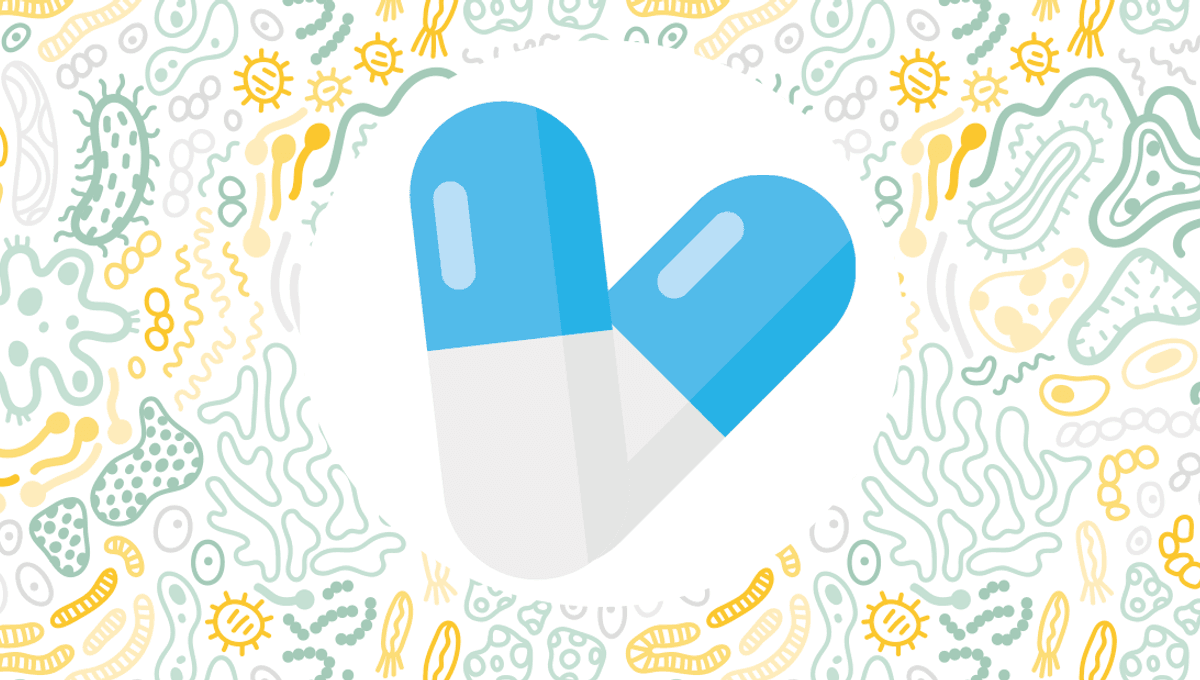
There’s no denying that antibiotics have revolutionized the way that infections are treated – but the bacteria that they’re designed to stop are increasingly fighting back. Known as antibiotic resistance, it’s a fast-growing threat to public health, so what’s being done to stop it?
What is antibiotic resistance?
Antibiotic resistance is the term for when bacteria no longer respond to antibiotics – they cannot be killed or have their growth inhibited by them. It comes under the wider banner of antimicrobial resistance, which also includes drug-resistant viruses, fungi, and parasites.
Bacteria can naturally become resistant to antibiotics, either through mutations that occur when they replicate or by acquiring “resistance genes” transferred to them by other bacteria.
The trouble is that those natural processes can be accelerated when antibiotics are used unnecessarily or incorrectly, leading to resistant populations can that survive and thrive even when antibiotics are administered.
What’s the situation now?
Overuse and misuse of antibiotics is exactly what has happened, both in humans and in agriculture, and it doesn’t seem to be slowing down; according to a 2021 study by the Global Research on Antimicrobial Resistance (GRAM) Project, global antibiotic consumption rates increased by 46 percent between the years 2000 and 2018.
The World Health Organization recently found that “widespread overuse” of antibiotics in hospitalized COVID-19 patients may have exacerbated the situation.
Inappropriate use of antibiotics appears to be one of the biggest drivers behind what is often dubbed the “antibiotic resistance crisis” – and that is a threat to public health across the globe. One example of this is patients not completing the full course of antibiotics they are given – which can be tempting if they feel better.
You’ll most likely have heard of MRSA, a methicillin-resistant form of the bacterium Staphylococcus aureus that can cause serious infections. However, drug-resistant forms of E. coli, and the species behind tuberculosis and typhoid – among others – have also become major problems.
Infections with such bacteria can become harder to treat, or cannot be treated at all. Not only does this increase the chances that the infection will be spread to others too, but also puts individuals at risk of serious complications, disability, and death; antibiotic-resistant bacteria are estimated to have caused 1.27 million deaths globally in 2019.
What’s being done about it?
If things continue as they are, the situation only looks set to worsen, with scientists predicting that resistant bacteria could contribute to up to 8.22 million deaths per year by 2050 – that’s an increase of nearly 75 percent. So, what’s being done to tackle the problem?
One solution is to find new, non-resistant antibiotics. That’s easier said than done; developing a new antibiotic can take at least 10-15 years, and it also has an eye-watering cost, with estimates upwards of $1 billion. Considering the end result is often failure, and there’s a lack of potential profit even if they do succeed, plenty of pharmaceutical companies have given up trying.
There are those, however, who remain determined. Earlier in 2024, a team of scientists from the University of Illinois Chicago and the Beijing Institute of Technology identified a brand new class of antibiotic that has the potential to be “almost impossible” for bacteria to become resistant to, while another group began clinical trials for a new antibiotic against a highly drug-resistant strain of the bacterium Acinetobacter baumannii.
Scientists are also going off the beaten track in their search, looking to artificial intelligence, self-medicating animals, and even the depths of the Arctic Ocean in order to identify new candidates.
The discovery of novel antibiotics is only one part of the answer, however. We also need to change how we use them – otherwise, we may well end up back at square one.
Again, this comes with difficulties. Antimicrobial resistance “is a complex problem that requires both sector-specific actions in the human health, food production, animal and environmental sectors, and a coordinated approach across these sectors,” says the World Health Organization.
Navigating those complexities might be up to the powers that be, but as Tomislav Mestrovic, Affiliate Associate Professor at the Institute for Health Metrics and Evaluation (IHME) and Lucien Swetschinski, Research Scientist at the IHME, told IFLScience, there are things that we as individuals can do too.
“Individually, we can help reduce our personal risk of infection by only taking antibiotics when prescribed by a medical professional, practicing good hygiene, and staying home when sick,” they explained, adding that “advocating for responsible antibiotic use” can come in pretty handy too.
All “explainer” articles are confirmed by fact checkers to be correct at time of publishing. Text, images, and links may be edited, removed, or added to at a later date to keep information current.
The content of this article is not intended to be a substitute for professional medical advice, diagnosis, or treatment. Always seek the advice of qualified health providers with questions you may have regarding medical conditions.
Source Link: Antibiotic Resistance: How We're Trying To Win The Microscopic Arms Race